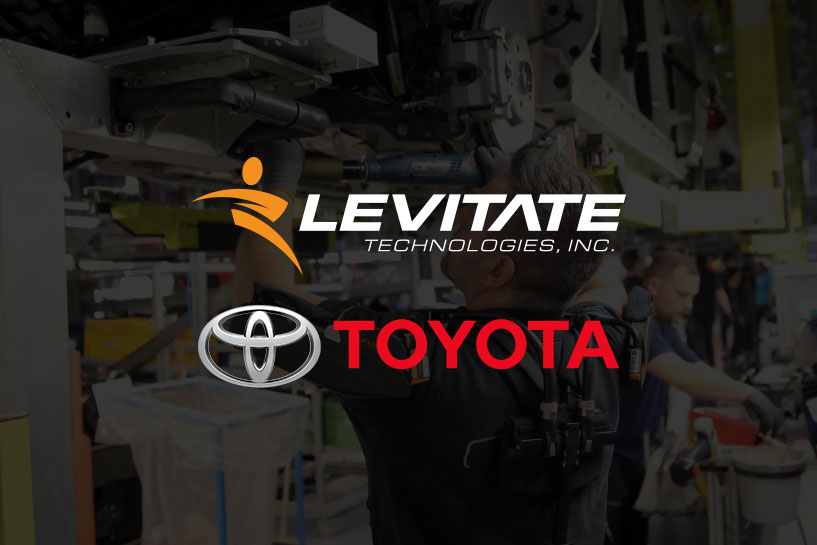
29 Mar Toyota’s Woodstock Plant Makes the Levitate AIRFRAME® Exoskeleton Mandatory Personal Protective Equipment
Exoskeleton Report – In an exoskeleton industry first, the Wall Street Journal reported last month that the Toyota Woodstock plant has made the Levitate AIRFRAME required equipment for 24 workers in the facility’s weld shop:
“In November, Toyota’s Woodstock plant began requiring 24 workers in the weld shop to use exoskeletons. On Monday, Toyota’s Princeton, Ind., plant will follow suit, and by March, nearly 200 of that plant’s 7,369 workers will be required to use the devices. “We identified risks of working overhead as a primary factor and contributor to injuries, so we tried to find ways to eliminate those risks, and the exoskeleton fit the bill quite well,” said Marc Duplessis, the Woodstock plant’s health and safety manager.”
At first reading, you might be left with the impression that this is another ergonomics trial, however, that does not appear to be the case. Instead, Toyota has made the AIRFRAME mandatory personal protective equipment (PPE) just like a pair of safety glasses, closed-toe shoes or earplugs. The exoskeleton protects the muscular-skeletal system of the upper body such as the shoulders, neck and back. This is a significant milestone not just for Levitate but for the entire exoskeleton industry.
Levitate at CES 2019
The AIRFRAME is a passive exoskeleton for work & industry. It is designed as an ergonomic technology device that supports the upper extremities of workers, surgeons and builders. The AIRFRAME is not meant to support the entire weight of the body, but just enough so it can help reduce injury and fatigue. If you are not already familiar with shoulder support exoskeletons then you are in luck! CNET’s Lexy Savvides had a chance to put together a very thorough overview of this ergonomic device:
Does the AIRFRAME Work?
Last August, Iowa State University’s Jason C Gillette and Mitchell L. Stephenson published a conference paper on EMG Analysis of an Upper Body Exoskeleton During Automotive Assembly (ResearchGate). In it, the authors conclude that there is a significant reduction in muscle activation while wearing the AIRFRAME depending on the task being performed.
Of course, this is the tip of the iceberg when it comes to the body of evidence that supports the use of shoulder exoskeletons. The Levitate team had the genius idea of taking their shoulder exoskeleton to various competitions that were never designed with exos in mind. Competitors competed with and without the exoskeleton and compared their scores, and more importantly, their scores over time. With this ergonomic device, the time it took for fatigue to set in and for quality to decrease (and the score to begin decreasing) was measurably longer.
As of publication, there are as many as eighteen developers spread around the world working on shoulder support exoskeletons. The interest in this technology continues to increase.

